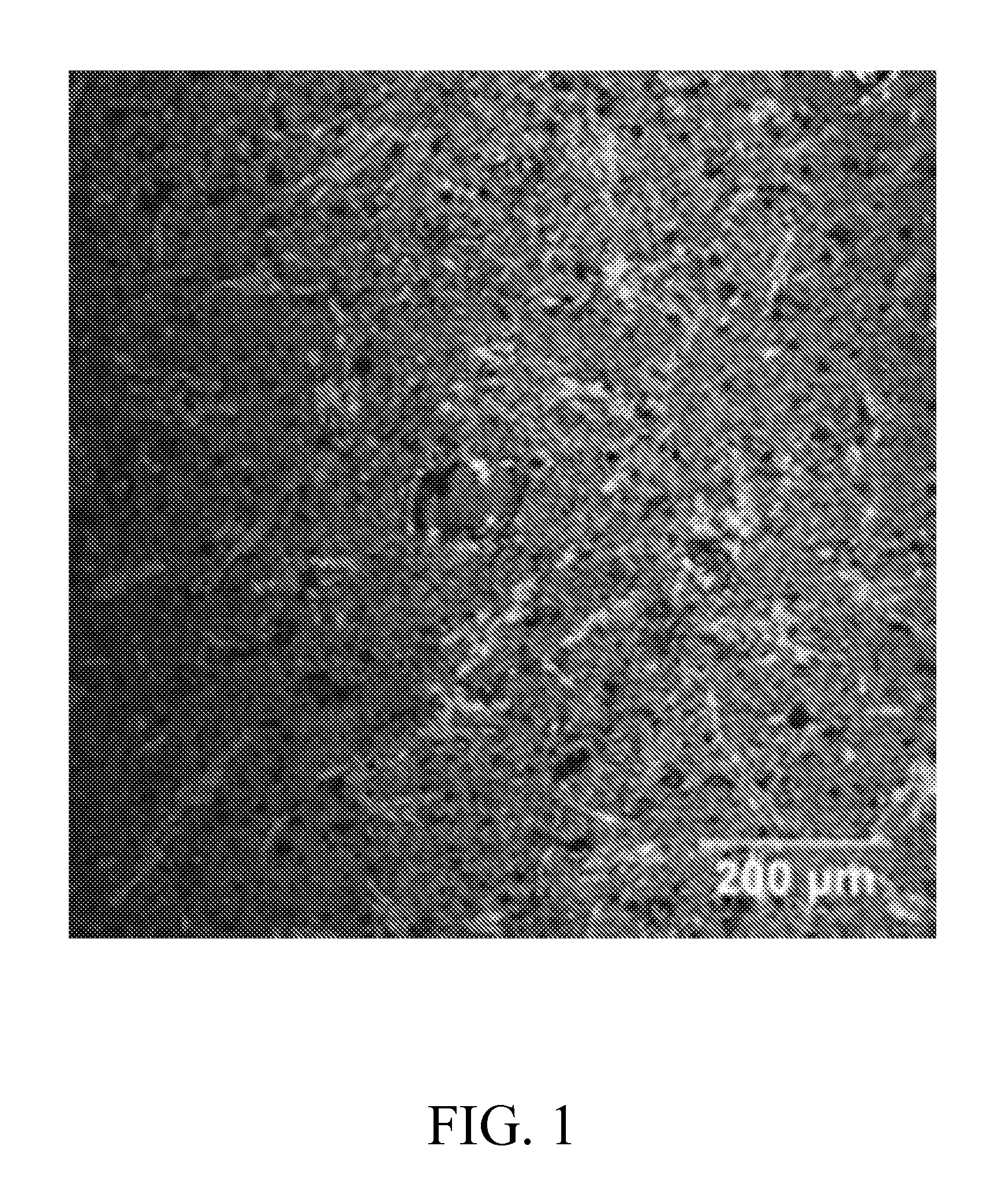Systems and methods for acid-treating glass articles
a technology of glass articles and acid treatment, applied in the direction of chemistry apparatus and processes, cleaning using liquids, coatings, etc., can solve the problems of equipment malfunctions and/or damage to the glass surface being treated, increase labor costs, and production rate and labor costs are significantly reduced, and achieve the effect of facilitating, nucleating and crystallizing precipitates
- Summary
- Abstract
- Description
- Claims
- Application Information
AI Technical Summary
Benefits of technology
Problems solved by technology
Method used
Image
Examples
example 1
Precipitation Study Using Non-Seeded Surfaces
[0050]In this example, three types of precipitation-capturing devices were studied for efficacy. Each of these devices were insoluble in HF and H2SO4. The first device was a sheet of smooth, non-porous VITON. The second device was a sheet of the same material, with the exception that the surfaces of the sheet were mechanically roughened using sandpaper. The third device was a sheet of porous PTFE (having a porosity of about 49% with a median pore size of about 17.8 μm).
[0051]An acid solution containing 1.5 M HF, 0.9 M H2SO4, and 10 grams per liter (g / l) dissolved glass was prepared. This involved the formation of a glass melt having the composition shown in Table I so as to simulate an ion-exchanged alkali aluminosilicate glass. After cooling the glass melt, the bulk glass was ground into a powder that could pass through 100 mesh screens using yttrium-stabilized zirconia media. The acid mixture was prepared by mixing 14.0 milliliters (ml)...
example 2
Precipitation Study Using Seeded Surfaces
[0056]In this example, the same three types of precipitation-capturing devices as in EXAMPLE 1 were studied for efficacy, with the exception that each device was “seeded” with precipitate particles prior to being placed in the acid solution.
[0057]The seeding treatment included preparation of a seeding solution and seeding the sample surface. The seeding solution used in this example contained 1.5 M HF, 0.9 M H2SO4, and 8 g / L of dissolved glass. 155.1 ml deionized water was first mixed with 13.0 ml concentrated HF (29 M) and 8.9 ml concentrated H2SO4 (18 M). 1.42 g of the same glass powder that was used in EXAMPLE 1 was then added to the acid mixture. After stirring for 5 hours at 700 rpm with a TEFLON-coated magnetic stir bar, the glass powder was completely dissolved. The resulting solution was the seeding solution.
[0058]The seeding treatment included soaking each sheet in the seeding solution for 3 hours, followed by drying in a ventilated ...
PUM
| Property | Measurement | Unit |
|---|---|---|
| temperature | aaaaa | aaaaa |
| temperatures | aaaaa | aaaaa |
| temperature | aaaaa | aaaaa |
Abstract
Description
Claims
Application Information
 Login to View More
Login to View More - R&D
- Intellectual Property
- Life Sciences
- Materials
- Tech Scout
- Unparalleled Data Quality
- Higher Quality Content
- 60% Fewer Hallucinations
Browse by: Latest US Patents, China's latest patents, Technical Efficacy Thesaurus, Application Domain, Technology Topic, Popular Technical Reports.
© 2025 PatSnap. All rights reserved.Legal|Privacy policy|Modern Slavery Act Transparency Statement|Sitemap|About US| Contact US: help@patsnap.com



